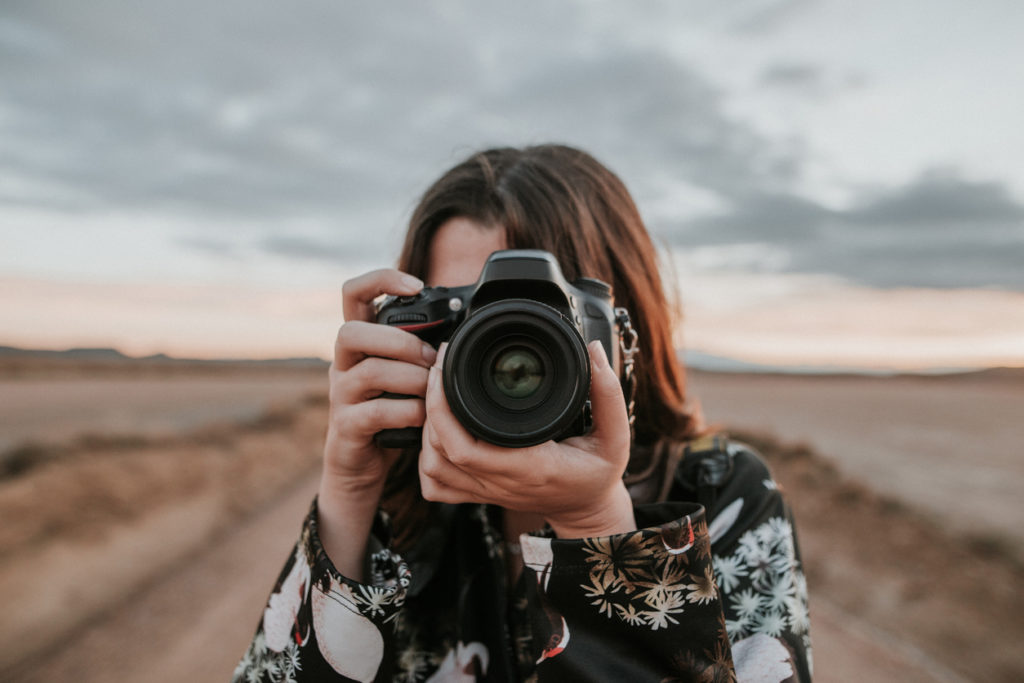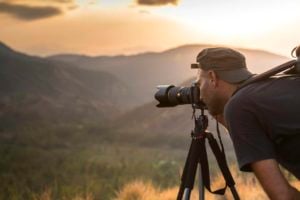Many people enjoy the ability to use their smartphone as a camera. You can take photos of family, pets, and the places you visit to share with friends by text or social media such as Facebook or Pinterest. Maybe you are receiving compliments about your photography. And, maybe you are ready to take your hobby one step further.
While photography options continue to advance on smartphones with zoom and portrait features, there is still only so much you can do with the phone. Maybe it is time for you, as an advanced beginner, to take the next step into digital photography. Where to start?
Camera designers and manufacturers haven’t strayed far from their 35mm roots. The most common names during the late 20th and early 21st centuries remain players into the digital age. Let’s discuss a few of the most favored brands taking that step from 35mm to digital single-lens reflex (DSLR).
Canon
Canon remains the most popular brand with consumers, and many professionals as well. One reason is that cameras are the only thing Canon produces, and they do it well. Highly recommended in 2020 is the Canon Rebel SL3 / 250D, which rates well with TechRadar and is suggested as a great first DSLR camera.
Some of its pros are the camera’s size and weight, making it easy to use for those with smaller hands. It has a good dual-pixel sensor autofocus system and a long battery life for use out in the field. This camera may be purchased with or without a standard Canon 18-55mm f/4-5.6 lens.
The vast majority of all Canon cameras are made in Japan. The suggested retail for this model is $749, but it can easily be found for at least $100 less and even deeper discounts if you search them out.
Nikon
Nikon is considered “the” professional’s camera, although anyone can own and use one. Traditionally Nikons have been a bit larger and heavier than Canons, and more expensive. But the two brands have been extremely competitive with each other for years, and are considered the two most popular brands.
The choice comes down to personal preference. The camera bodies differ and feel different to hold. The external configuration of settings and buttons of each are also different, as are their menus.
The Nikon Z6 rates first on TechRadar’s Top 10 list. It also rates among those higher in price, although the Nikon D850, a good intermediate photographer’s option, does cost more. No doubt, these are top-of-the-line equipment for an intermediate to advanced photographer, but unless you have money to burn, you may not want to invest an additional $1-2K for your first DSLR.
Nikon DSLR camera bodies run from about $450 for the D3500 to $5,500 for the D5. The D3500 has been around for a while and is a great camera with good low-light performance and will shoot up to 12 frames per second with continuous shooting. It has an ISO native range of 100 to 102,400, making it great for low-grain, low-noise photos, but also allowing for low-light situations.
Nikon cameras are built in Japan and Thailand.
Olympus
While Olympus originally started out producing microscopes and thermometers in 1919, its fine glasswork and optics quickly advanced into cameras and its well-known Zuiko lenses in the mid-1930s. The Japanese-based company had a huge hit with its OM1 and OM2 series 35 mm cameras, as they were lightweight, easy to handle, and easy to use.
Similarly, Olympus remains popular in the digital world, although it is not as common a household brand as others. It is well-known by professionals, while it still lends itself to those starting out with their first DSLR camera.
The Olympus DSLR model which stood out with TechRadar is the OM-D EM 10 Mark III.
“While the main specification of the OM-D E-M10 Mark III doesn’t offer a huge upgrade from the Mark II, Olympus has refined and tweaked one of our favorite mirrorless cameras to make it an even more tempting proposition for new users and enthusiasts alike,” the review reads.
One top quality its compactness, and ease of handling. While Olympus is a Japanese company, many of its cameras are assembled in Vietnam. The suggested retail for the OM-D E-M10 Mark III is $649, but even Olympus is offering it for $150 less on its website, which includes a 14-42mm lens f3.5-5.6, carrying case, and a secure digital memory card.
There are other brands of course, and one less traditional brand back in the days of film has been steadily on the rise with digital and that is Sony. Sony’s A7 III ranks third on that Techradar Top 10 list. Other good brands include Fujifilm, Pentax, and Panasonic.
How to Choose the Right Lens for Your DSLR

What lenses you may want depends upon what you intend to photograph. Everything from everyday 35mm or 50mm lenses are a great place to start, but what else is out there? And which lens is right for you?
Find a Reliable Everyday Lens
Remember, the Canon Rebel is equipped with an 18-55mm, as is the Nikon D3500, and the Olympus everyday lens is a 14-42mm. All of these are great overall use lenses, and also good for landscape photography. These make good portrait lenses, although, for more detail on the subject and less background, you may wish to utilize something closer to an 85 mm. With the smaller apertures of 14mm and 18mm on these everyday lenses, you are also ready for macro, or close-up photography.
Upgrade Lens for Shooting Sports and Wildlife
If you want to try to shoot sports or wildlife photos, you will need a lens with a longer focal length of up to 300-400mm or more, is fast with an f-stop of 2.8, and has a quick auto-focus. These lenses are definitely more expensive, but worth the price if you are serious about action photography.
One less expensive option is to still garner the zoom length but opt for an f-stop low-light aperture of 3.5 or 4. Vivitar, Tamaron, and Sigma specialize in lenses with fittings available for a variety of camera brands.
Take for example the Tamron 16-300mm f/3.5-6.3, available for Canon, Nikon, Olympus, and Sony. Highly recommended by Birdwatchinghq.com, this wide-angle, telephoto lens will capture a bird flying up in the air at one moment, and zoom in on an insect on a nearby leaf the next. This is a good piece of equipment for those moving up with action photography.
Ready, Set, Shoot! Enjoy Your First DSLR
There is little doubt that camera equipment has modernized right alongside the rest of the digital age. Be sure to shop around before you buy one. There are also a lot of good buys in used equipment. Just make sure you are purchasing from a reputable seller. Any camera retailer should offer a warranty even on used and refurbished equipment.
The most important thing is to have fun. Not every shot is going to turn out exactly the way you’d like, but feel free to experiment. When you’re ready to upgrade to a DSLR, reach out to us, and we’ll be happy to help find the right photography equipment for your needs.



